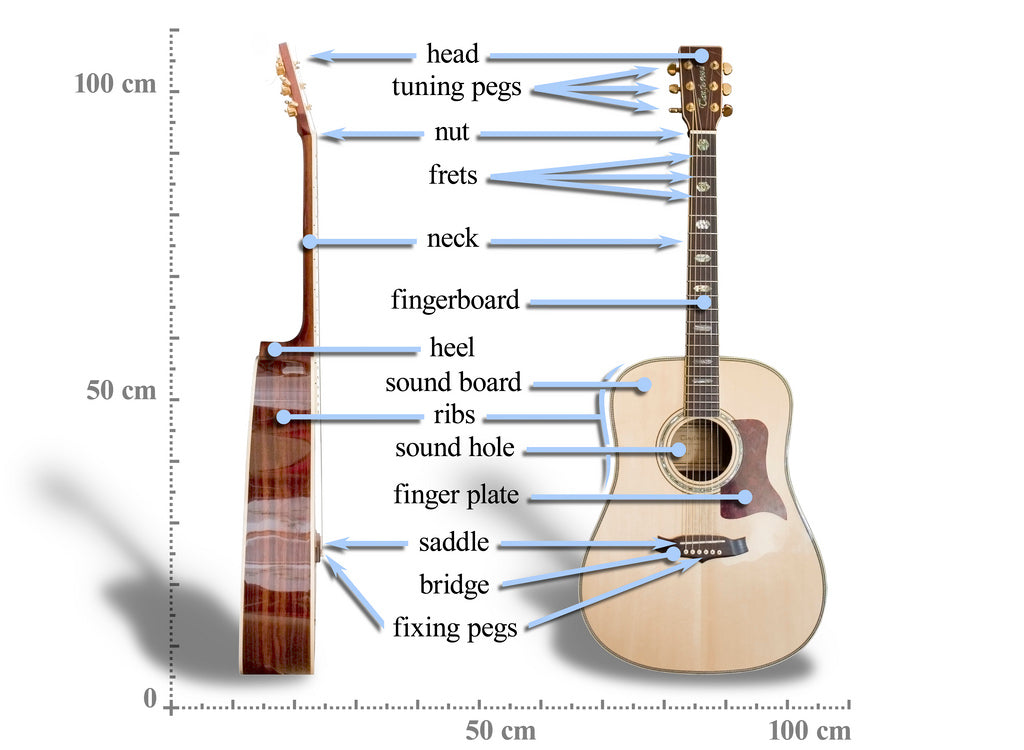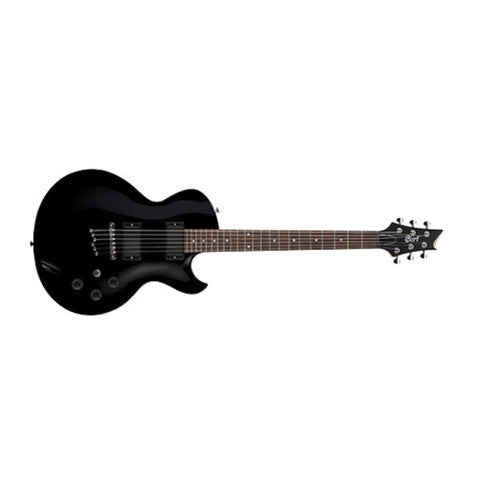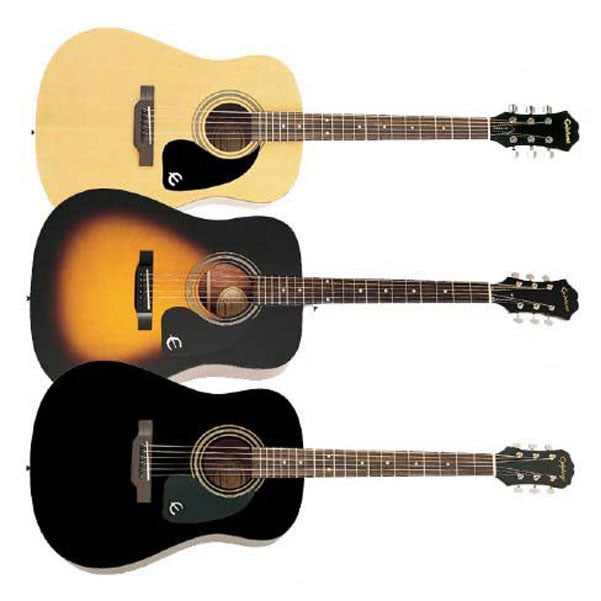 Your guitar needs to be tuned efficiently, only then it will allow you to play properly and not sound like some wannabe. How would you save yourself and your guitar from this? Well, that’s where tuning pegs come in pictures! Tuning pegs are also known as tuning machines, as the name suggests, it helps you tune your guitar. The fretboard (also known as the fingerboard) is something that is on the top side of the neck, where strings are routed, the small metal ridges in the fingerboard are known as ‘frets’, they help you define individual notes on the fretboard and makes pitch easier to play! Right at the top of the fretboard, exactly under the headstock is a slotted piece called the ‘nut’. Strings are routed through theses slots in the nut right up to the bridge, located at the far end of the body. When you pluck the strings or strum them, they vibrate between the nut and the bridge, this vibration is what produces the sound! Now how that vibration translates into sound depends on the type of guitar you are using. There are two main categories of guitar:
Your guitar needs to be tuned efficiently, only then it will allow you to play properly and not sound like some wannabe. How would you save yourself and your guitar from this? Well, that’s where tuning pegs come in pictures! Tuning pegs are also known as tuning machines, as the name suggests, it helps you tune your guitar. The fretboard (also known as the fingerboard) is something that is on the top side of the neck, where strings are routed, the small metal ridges in the fingerboard are known as ‘frets’, they help you define individual notes on the fretboard and makes pitch easier to play! Right at the top of the fretboard, exactly under the headstock is a slotted piece called the ‘nut’. Strings are routed through theses slots in the nut right up to the bridge, located at the far end of the body. When you pluck the strings or strum them, they vibrate between the nut and the bridge, this vibration is what produces the sound! Now how that vibration translates into sound depends on the type of guitar you are using. There are two main categories of guitar:
- Acoustic
- Electric
But of course you know that, let’s look into a few details about it and also into something known as ‘acoustic-electric’ in a minute.
What are Acoustic Guitars and Electric Guitars? What is the difference between them?
Acoustic guitars are way different from electric guitars! The first and foremost difference is that you don’t need to plug acoustic guitar to hear it. Larger in size, with hollowed sound chamber that boosts the resonances of the guitar’s wooden top and body as you pluck the strings. The bridge helps transmit the strings’ vibrations to the body (we’ve been over this before, remember?) The wood used to make a acoustic guitar has a very, very major impact on the sound. That is why the wood used for the top is of better quality acoustics and are crafted in certain manner that produces crisp, articulated sound. Certain cheap guitars are built with laminate tops made from a couple of layers of wood pressed together. Of course laminate is durable and attractive, but remember what we said about wood being an important factor in good guitars? That said and done, guitar’s size also affects the tones too, larger instruments with dreadnought or jumbo bodies give out more volume and tend to have warmer, rounded tones that emphasize bass notes. Smaller guitars (concert or ‘000’ models) have slightly brighter sounds in the middle and treble range. Acoustic guitars have steel strings (though classic and flamenco guitars have nylon strings, produces rich, soft tones) another very distinguish characteristic of acoustic guitars! Although some not so good guitarists suggest that a beginner should start with nylon strings, as it is easy on the fingers, I am skeptical about that one. Nylon and Steel strings are interchangeable, hence as you progress you kinda get used to it. Your decision to play on steel strings or nylon depends on the kind of music you want to play. Acoustic guitars are just simple. It is uncomplicated and just perfect for beginners. Although, Acoustic guitars are larger than Electric ones with heavier gauge strings, if you have small hands, acoustic guitar might not be the best option for you. Electric guitars on the other hand, require a cable and amplifier before to make music. They are but of course, smaller and thinner than acoustic ones and they come in so many different shapes and sizes! Electric guitars are very dependent on electronic pickup to make sound, which is why you need to have a good knowledge of the products that compliments your guitars.
Not every beginner has an interest and knack for Electric Guitars, but if you or your child is one of them, we have a range of guitars (both acoustic and electric) to help you find your perfect first guitar!
- Cort Electric Guitar – Cort is renowned name in among guitarists who prefer electric guitars, a perfect fit for your first guitar, Cort X6 is ideally in every possible sense. Not only does this electric guitar have Basswood body, Cort X6 comes with a Rosewood neck and Double Locking III Tremolo So far you will know that these specifications would work wonders as your first guitar! Cort Zenon Series Z42 is also an apt choice if you are looking single cutaway models, with Mahogany body and Rosewood neck along with T.O.M Bridge with String through Body, Cort Z42 is simply awesome!


- Ibanez GRG170DX Electric Guitar – This little beauty is a perfect mix of looks and playability. The GRG-shape maple neck meets up with a basswood body accommodation a humbucker at the neck and bridge, and a single-coil in the middle position, along with FAT 10 bridge. The 24-fret rosewood fingerboard features edgy sharktooth inlays. One of the best electric guitars you will ever see!

- For acoustic guitars, we would recommend you to look at Fender CD60 Dreadnought Acoustic Guitar, this guitar is loaded with features despite being extremely affordable! Spruce top, mahogany back and sides and die-cast tuners and many more things, after all its Fender! Need we say more? And the classic Epiphone DR100 Dreadnought Acoustic Guitar, perfect is every sense.




 Used Gear
Used Gear
 Connect
Connect


